13 Ways To Calm An Anxious Dog: What Worked for Lexie and Me
If you’ve ever watched your Goldendoodle pace or hide during thunderstorms, you know how tough it can be when our dogs are feeling anxious. Lexie and I have had our own share of restless nights and worried walks, so we understand how helpless it feels when you want to comfort your pup but aren’t sure what will actually help.

This article covers 13 ways to calm an anxious dog, so we can all help our Goldendoodles (and ourselves) find a little more peace when those nervous moments pop up. From our own experiences together and lots of trial and error, we’re excited to share practical tips that can make daily life calmer and happier for everyone.
1) Take Lexie for a long walk to burn off nervous energy and lift her mood.
We’ve learned that a good, long walk can work wonders when Lexie starts to feel anxious. Whether it’s the sound of thunder or new neighbors coming by, walking helps her reset. Sometimes we go farther than usual, just to give her extra time to sniff and relax.
On tough days, we take different routes to keep things interesting. Lexie’s tail perks up whenever she gets to explore a new patch of grass or say hi to a favorite mailman. Even if she’s feeling jittery at the start, she usually finishes calmer and a little happier.
Exercise is a reliable way for us to burn off some of that nervous Goldendoodle energy. Some experts agree that a walk before leaving your dog can help with anxiety, as seen in tips from Central California SPCA. We’ve found this rings true for us.
Of course, not every walk is perfect. Sometimes Lexie wants to chase every squirrel or gets her leash tangled. Even then, the fresh air and steady movement help us both feel better—one step at a time.
2) Use gentle massage on your dog’s shoulders and neck to relax tense muscles.
We’ve found that gentle massage can really help calm an anxious pup. With our Lexie, massage time has almost become part of our daily routine—especially when thunderstorms roll in or she’s had a busy, overstimulating day.
We usually start by using our fingertips to make small, slow circles just below her head and along her neck. It helps if we keep our touch light and always watch how she feels about each movement. For us, Lexie’s little wiggle or sigh is a good sign we’re on the right track.
From there, we work our way down to her shoulders, still using those gentle circles. We stay away from the bones and focus on the soft, muscle areas. Massage should always be comfortable for dogs—never forceful.
If you’re new to this, it can help to watch a quick video or read a guide like the tips on how to massage a dog. We were both beginners once, and it took time to find the rhythm Lexie liked best.
We don’t always get it perfect, but taking a few minutes to quietly connect this way has helped strengthen our bond. And honestly, it’s relaxing for us, too.
3) Play calming music or white noise to create a soothing background environment.
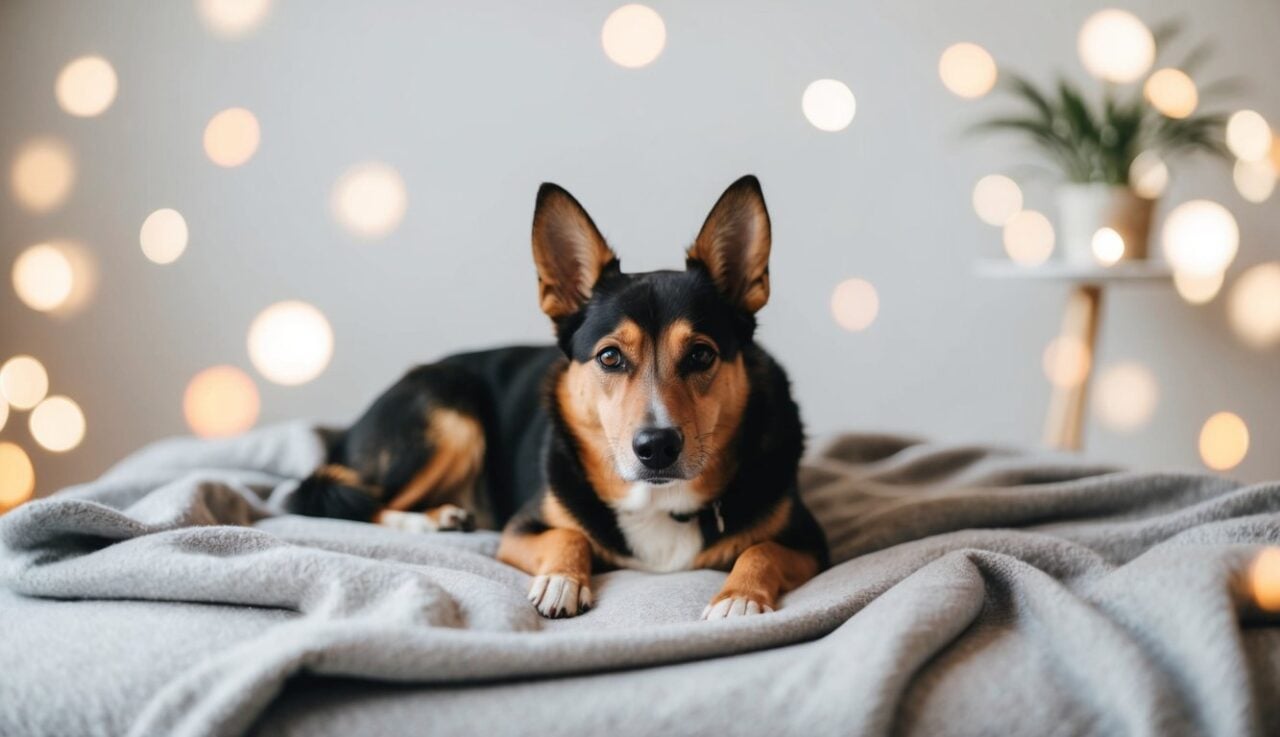
We’ve noticed that background sounds make a big difference for Lexie, especially when the house feels too quiet or there’s noise outside. Gentle music or soft white noise can help take the edge off and create a steady environment, so our anxious pups aren’t as jumpy at every little sound.
When Lexie was a puppy, storms would send her under the couch. We started playing calming dog playlists—nothing fancy, just some soft music with slow beats. It didn’t make her love thunderstorms, but she definitely started pacing less and settling more easily.
Studies show relaxing dog music can lower stress in pets. Calm genres like reggae, classic rock, and acoustic songs tend to work best. We also like using soothing white noise tracks if outside noises are unpredictable.
Not every song or sound will be a hit, so it’s good to experiment. Some pups prefer deep separation anxiety tracks, while others do well with softer classical music. For Lexie, it’s usually a quiet playlist or a gentle fan blowing in the background that helps her relax.
4) Give your dog a puzzle feeder to keep her busy and distracted from anxiety.
One trick that has really helped us is using puzzle feeders. When Lexie starts to pace or seems worried, we grab her favorite puzzle toy and let her go to work. These feeders give her something active and rewarding to focus on besides whatever is making her anxious.
Puzzle feeders are more than just a way to slow down meal times. They encourage our dogs to use their brains and noses, which tires them out in a good way. I’ve noticed Lexie seems less jumpy after she’s solved a treat puzzle.
Some treat-dispensing toys can also help keep a dog distracted from anxiety triggers around the house. If you’re curious about which ones might work for your Doodle, check out some interactive dog toys that keep them busy. We went through a few before landing on the right fit for Lexie, so a little trial and error may be needed.
Sometimes Lexie gets frustrated if a puzzle is too hard, so we start easy and help her if needed. The goal here is to keep things fun and positive. For us, a puzzle feeder is just another way to add enrichment to our days and help soothe anxious moments.
5) Set up a quiet, cozy spot filled with her favorite blankets or toys.

We all know how much our pups love their creature comforts. For Lexie, her favorite blanket is like a little security shield when things feel overwhelming. We picked a quiet corner of our living room to make her own space, away from the noisy TV and front windows.
Soft bedding makes a huge difference. We layer Lexie’s bed with her favorite old baby blanket (yes, she’s had it since puppyhood!) and a couple of plush toys she loves to carry around. Sometimes, we add a tee-shirt that smells like us for extra comfort.
Creating a cozy spot is really about making it feel safe and familiar. We also keep her favorite chew toy there and slip in a treat or two when she needs some encouragement to retreat to her “den.”
Some dogs, like Lexie, seem to feel more at ease when they have a spot that belongs just to them. It’s such an easy way to help them relax, especially when there’s thunder, fireworks, or just a busy day in the house. If you want more ideas on calming spaces, you can check out these tips for creating a zen spot for your dog.
6) Practice deep breathing near your dog to model calm behavior she can pick up on.
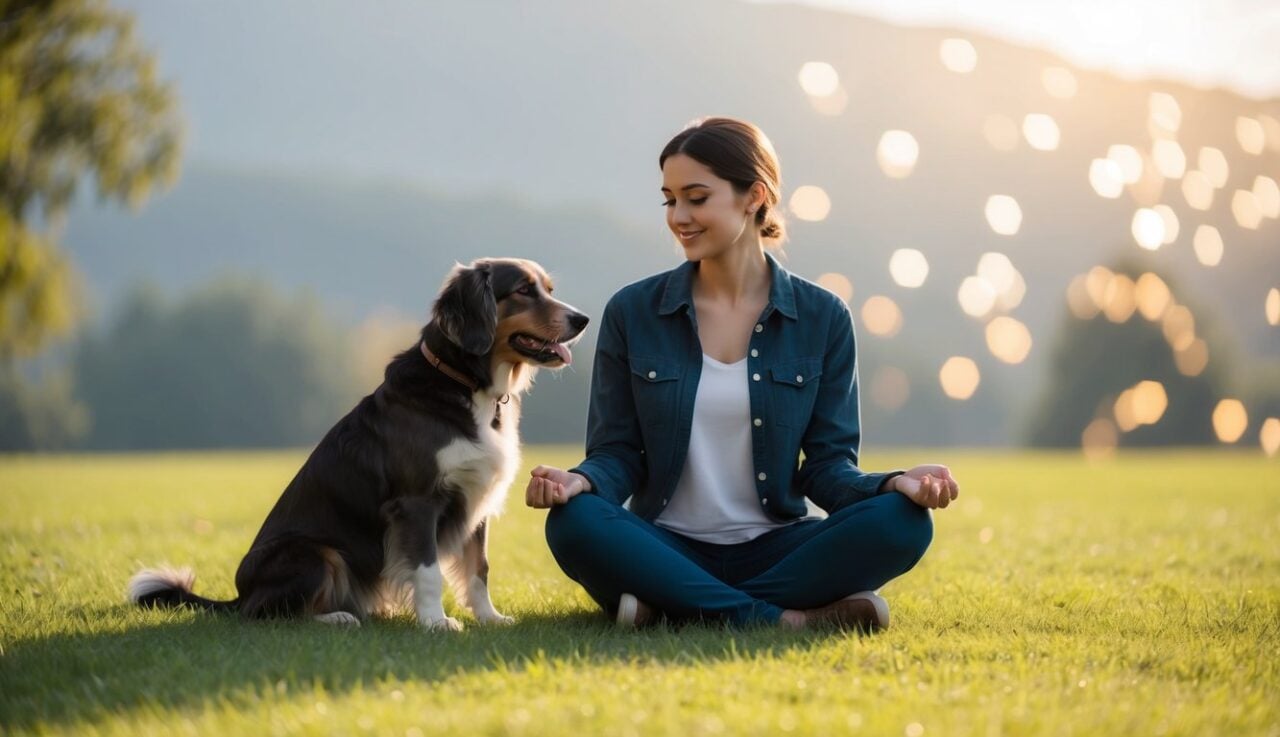
One thing we’ve learned with Lexie is that our mood really affects her mood. If we’re tense, she seems to get antsy, too. So, when Lexie starts pacing or whining, we try to take a few deep, slow breaths right in her presence.
We don’t do anything fancy—just breathe in slowly, hold it for a second, and breathe out. Sometimes, we even say “breathe” softly while we do it. It’s surprising how this simple act helps us relax, and soon enough, Lexie will settle down beside us, watching quietly or letting out a big sigh.
Experts say dogs often look to us for cues and may mirror our calmness. There’s science behind the idea that intentional breathing can help our dogs relax by modeling balanced emotions.
We try this most when thunderstorms roll in or when someone rings the doorbell. Lexie seems to trust us more in those moments, and sometimes that’s exactly what she needs. Plus, who couldn’t use a little extra calm in their life?
7) Offer calm, slow physical contact like petting her chest or behind the ears.
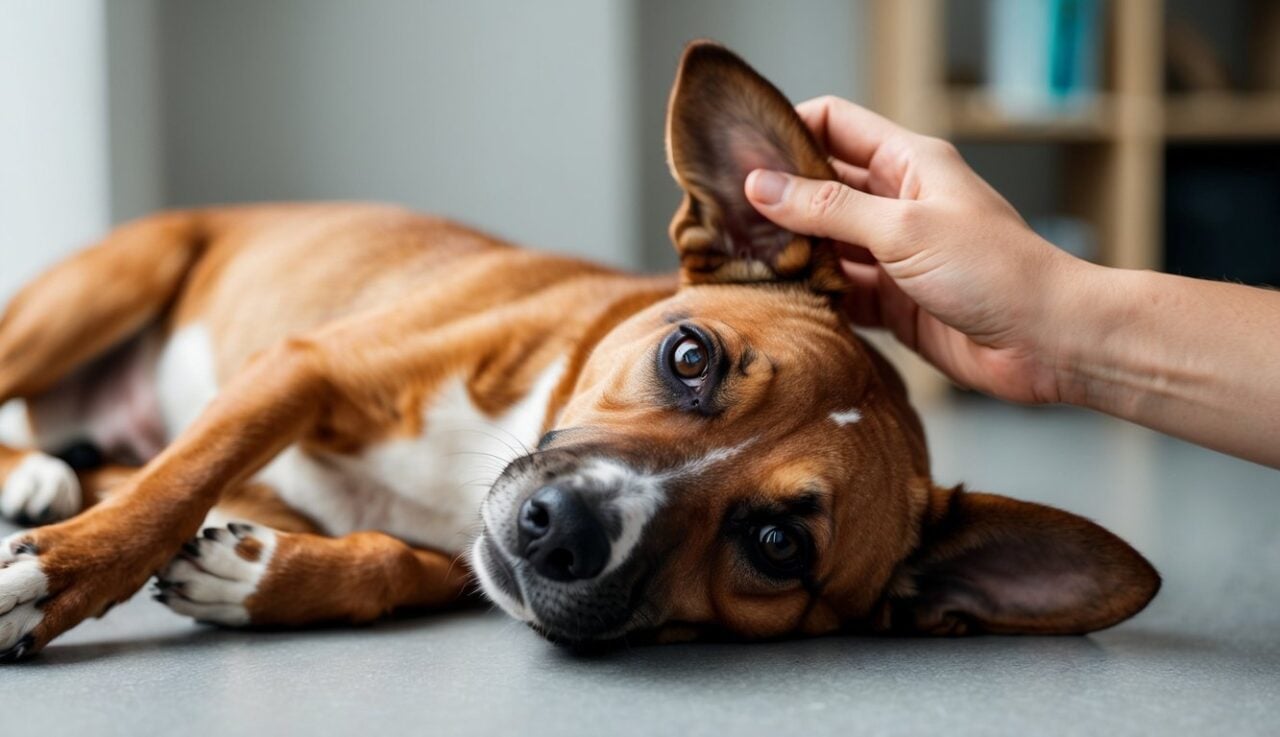
When our Goldendoodle Lexie starts getting anxious, we’ve found that calm, gentle touch works wonders. Slow strokes on her chest or just behind her ears seem to help her relax almost every time. It’s like she knows it’s our way of saying, “You’re safe with us.”
We always use slow, circular motions and keep our voices soft. If we rush or get too excited, Lexie sometimes gets more worked up, so we’ve learned to keep everything nice and easy. This kind of touch is known for helping dogs release tension and feel comforted, especially during storms or when the house is busy.
There are days when Lexie actually leans into our hands, almost asking for more. It reminds us just how much simple physical contact can mean to our pups. If you’re not sure where to start, try gently rubbing your dog’s chest or the base of their neck—many experts say those are great spots for soothing, according to helpful tips we’ve seen on Quora.
Of course, every Doodle is different. We always watch Lexie’s body language to make sure she’s truly enjoying it. Sometimes a little extra cuddle time really does make all the difference for both of us!
8) Try a snug calming vest designed to gently wrap and comfort anxious dogs.
We first discovered calming vests when Lexie started getting nervous during thunderstorms. Our Goldendoodle would pace around the house, shake, or sometimes try to hide under the table. It broke our hearts seeing her so stressed.
A calming vest works by applying gentle, even pressure around your dog’s body. The idea is kind of like swaddling a baby. The gentle wrap can help some dogs feel a little more secure when they’re worried or scared. We like that it’s a drug-free option.
When we use her vest, Lexie seems to settle faster. She isn’t totally “zen,” but the trembling and panting calm down. Not every dog will respond the same way, but for us, it’s worth a try on those stormy nights or even when we have fireworks nearby. If you’re curious, you can read more about calming vests for dogs at the ThunderShirt website or look into other dog anxiety relief coats.
Just make sure the vest fits snugly but isn’t too tight. We double-check the fit every time, especially since Lexie is a bit fluffier after her winter coat comes in. It might not be a magic fix, but for us, it’s one more tool to help our senior Doodle feel calm and safe.
9) Stick to a consistent bedtime routine to help Lexie settle down at night.
We’ve learned that Lexie does best when her nights follow the same pattern. Around 9pm, we dim the lights, put away noisy toys, and switch to a calm, quiet activity. Some nights that means just sitting with her, rubbing her ears while we wind down from the day.
A familiar routine helps Lexie know bedtime is coming. She actually starts to yawn and look for her bed as soon as she spots us brushing our teeth. Soft music sometimes helps too—I think she likes the background noise, and I know some dogs relax when they hear gentle sounds before bed. If you want more ideas, there are a few tips about winding down, like dimming lights or playing music, at this article.
We avoid big changes right before bedtime, like loud TV or a hyper play session. Those used to make her pace or seem restless at night. Sticking with our simple routine lets Lexie feel safe, and honestly, it makes getting to sleep easier for us, too!
10) Use treats to reward calm behavior during stressful situations.
We’ve all been there—our Goldendoodle gets anxious when the doorbell rings, or the vacuum comes out, or maybe at the vet’s office. Lexie and I have found that having treats handy makes a huge difference during these moments.
We try to catch those rare calm seconds, like when Lexie pauses and takes a breath, and we reward her instantly. It’s not always easy because, yes, handing out treats can sometimes excite her again! If that happens, we just wait for another quiet moment and try again.
It helps to keep small treats in pockets or on tables around the house. When something stressful happens, we can grab a treat and reward Lexie for calm behavior before she gets worked up. Over time, she’s learned that being calm earns her something tasty.
Sometimes we skip excited praise—just a gentle “good girl” and a treat is enough. If your Doodle tends to get hyped up when you reach for snacks, keeping treats low-key can help. This approach worked for us, especially after reading tips from other doodle owners who keep treats nearby to reward calmness.
11) Avoid too much excitement during scary moments to help maintain her composure.
When scary moments hit—like thunderstorms or fireworks—it’s easy to want to swoop in with hugs, excited voices, or treats. We’ve learned with Lexie that too much fuss can actually make her more anxious, not less. Instead, we try to stay calm and gentle, using soft voices and steady movements.
If we get too excited or “extra” during these times, Lexie picks up on that energy and sometimes seems even more worked up. Sometimes, just sitting quietly with her in her safe spot, like her bed or crate, helps her relax. It’s not always easy, especially when we want to comfort her, but keeping things low-key really does make a difference.
We also avoid playing energetic games or encouraging wild play during those stressful moments. Dogs like Lexie often look to us for cues. If we keep our cool and the energy in the room stays calm, she’s much more likely to settle and not escalate her nervousness.
For more detailed tips on keeping things calm, I found this helpful guide useful when we started working with Lexie’s anxiety.
12) Try food-dispensing toys to keep her mind engaged and reduce nervous habits.
We’ve found that food-dispensing toys are a game changer for anxious dogs, especially when routine alone just isn’t enough. When Lexie starts pacing or licking her paws because she’s feeling nervous, we pull out her treat ball or a puzzle feeder. It gives her something to focus on besides her worries.
These toys make snack time last longer and encourage her to use her brain to solve problems. Lexie tends to forget what was making her anxious as she paws and noses her way to every last kibble. Plus, food puzzles can help slow down fast eaters, which Lexie definitely used to be!
There are so many options out there. Some toys let us freeze peanut butter or homemade treats inside, so they last even longer—perfect for those extra-nervous days. If you want ideas, check out this list of mental stimulation toys for dogs for a variety of choices.
We’ve noticed Lexie settles down after a good session with her treat toy. It’s not a magic fix, but it lets us enjoy a little calm together, even on squirrel-filled afternoons.
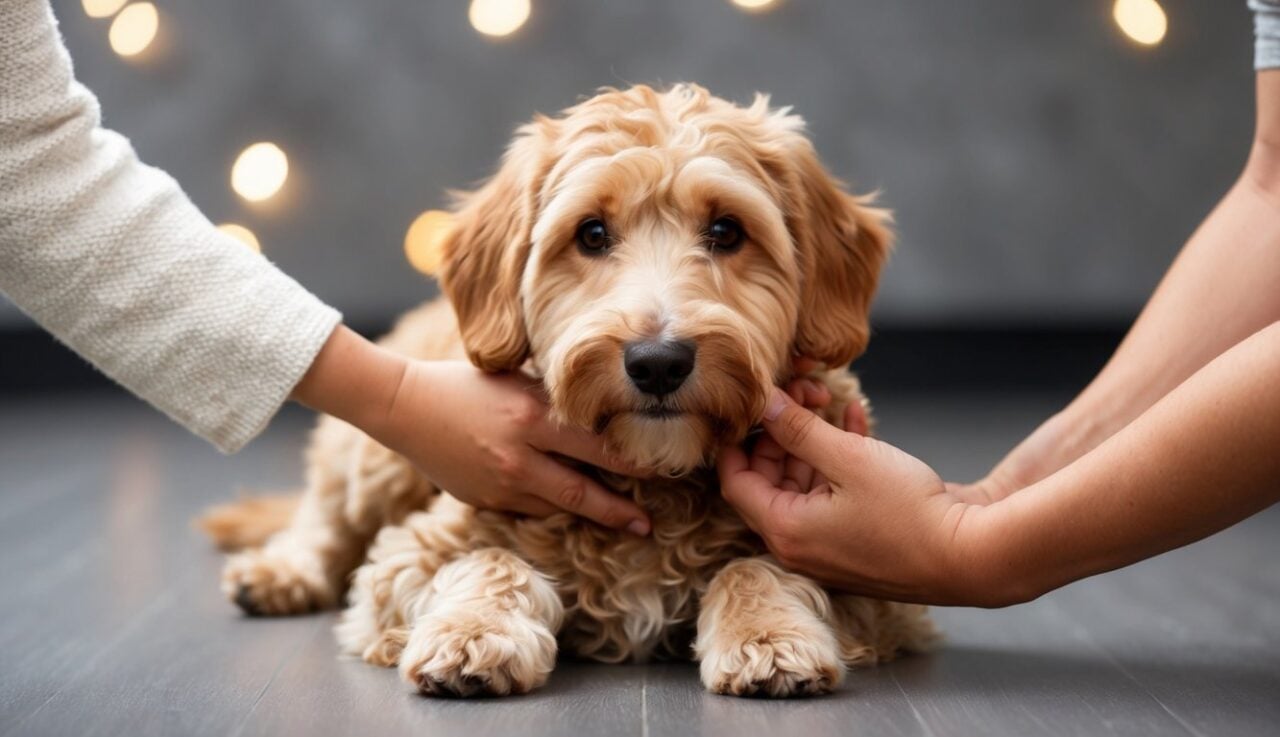
13) Give Lexie a ‘time-out’ in a safe room away from noise or chaos.
Sometimes, the house just gets a little too loud for Lexie. When the doorbell rings nonstop or the vacuum roars, we notice her starting to pace or tuck her tail. That’s when a little “time-out” in her safe space works wonders.
We set up a quiet room just for her, away from the main hubbub. There’s a cozy bed, a few favorite toys, and her water bowl. Sometimes we even play some soft music or white noise, which actually helps calm her down, like they suggest in this article on how to naturally calm your dog.
Lexie knows her safe room is her chill zone. If we see her getting anxious, we gently lead her there before things get too overwhelming. We don’t close her in (unless she wants it), but we give her space to decompress and catch her breath.
I’ve found our own mood matters, too. If we’re rushing around, Lexie feels it. So when it’s time for her break, we make sure to keep things easy and calm for everyone. Sometimes she just needs a little break—something we can all relate to.
Understanding What Makes Dogs Anxious
Understanding what makes our dogs anxious helps us give them a more peaceful, happy life. With Lexie, our 10-year-old mini Goldendoodle, we’ve learned that anxiety can show up in surprising ways and be triggered by things we never expected.
Common Triggers I’ve Noticed With Lexie
Over the years, we’ve seen Lexie react to all kinds of things. Thunderstorms are probably her biggest enemy—she can hear rumbles long before we do and always seeks out a safe spot.
Loud noises like fireworks or even the vacuum can send her running for cover. Visitors at the door, especially if they’re strangers or bring big bags, also make her nervous.
Changes in routine matter a lot, too. When our schedule shifts—like daylight savings or a late dinner—Lexie’s a little off for days. Even simple things, like moving her bed to a different corner, can throw her.
Separation is another big trigger. Lexie has always been a bit clingy (in the sweetest way), so leaving her home alone makes her anxious. We try to avoid sudden departures, instead giving her a favorite toy or treat before we go.
Exercise also helps, as a tired dog is often a calmer one. For more tips on helping anxious dogs stay calm, the AKC gives helpful expert advice.
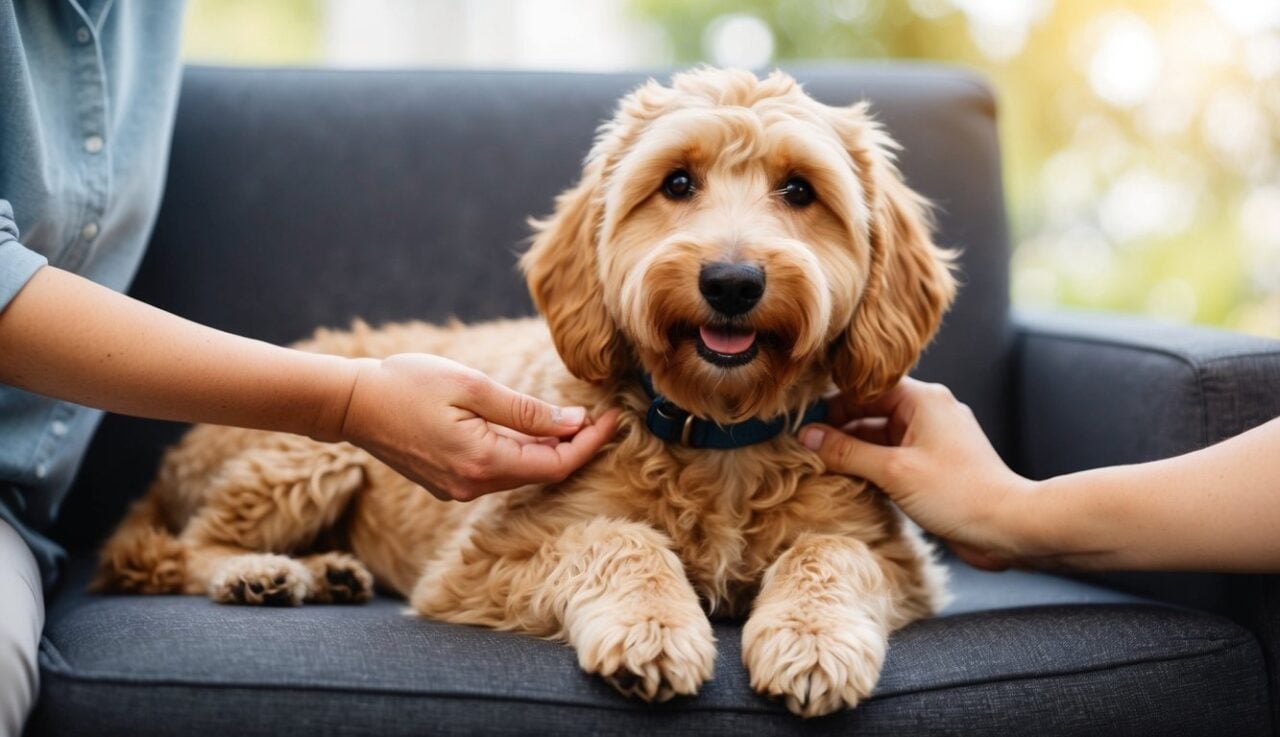
Body Language: How Lexie Shows She’s Stressed
Lexie isn’t shy about telling us when something’s wrong—she just does it in her own language. The classic pacing is our first clue. If she’s walking in circles or can’t seem to settle on her bed, we know she’s feeling uneasy. Panting (especially when it’s not hot), wide eyes, and ears pinned back are all signs she’s worried.
We’ve also noticed the yawn of stress. A big, dramatic yawn doesn’t just mean she’s tired. It’s a common Goldendoodle signal that she’s overwhelmed. Lexie sometimes licks her lips or hides behind our legs, especially if there’s too much excitement.
Catching these signs early lets us step in before she gets too upset. Sometimes it’s as simple as sitting down next to her or moving her somewhere quiet. If you watch closely, your own Doodle probably has a “tell” or two—each dog’s body language is a little different, but tuning in makes all the difference when supporting them.
Helping Your Dog Feel Safe and Secure
We’ve learned that having a calm daily routine and a safe, cozy space can make a big difference for anxious pups. Even small changes to how we schedule our days or set up our home can help our dogs feel more settled and less stressed.
How Routine Calms Lexie Down
When Lexie first started showing signs of anxiety, we found that sticking to a predictable schedule really helped her. We feed, walk, and play with her around the same times every day. She knows what to expect, and that predictability seems to give her comfort.
I noticed that if we had friends over or had to change plans suddenly, Lexie would often pace or pant more.
On those days, we try to give her an extra snuggle in her favorite spot—a big, squishy dog bed in the corner of our living room.
Keeping her routines as normal as possible, even when things get busy, always seems to help her settle. If you want to read more on why a sense of security is essential for anxious dogs, check out these tips to help your dog feel safe.